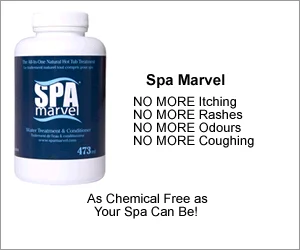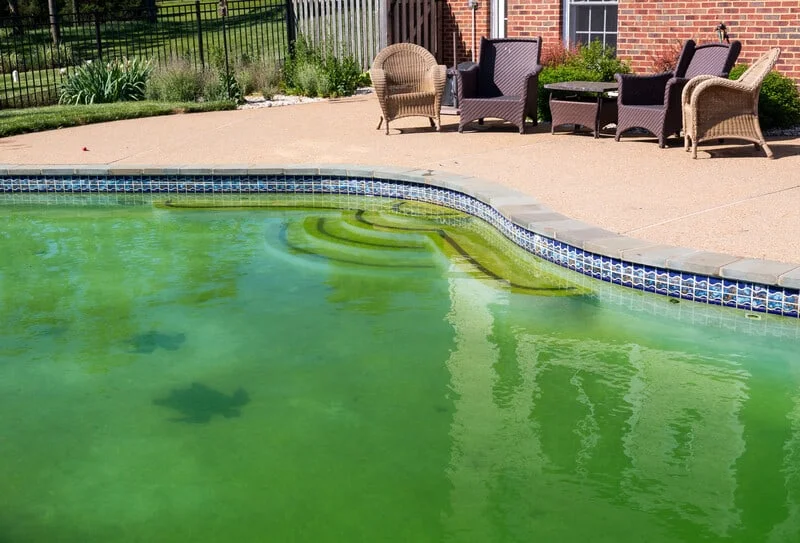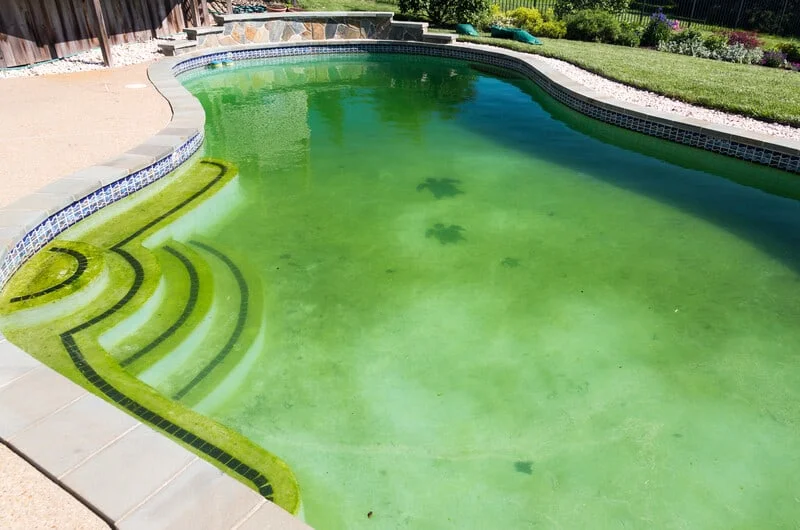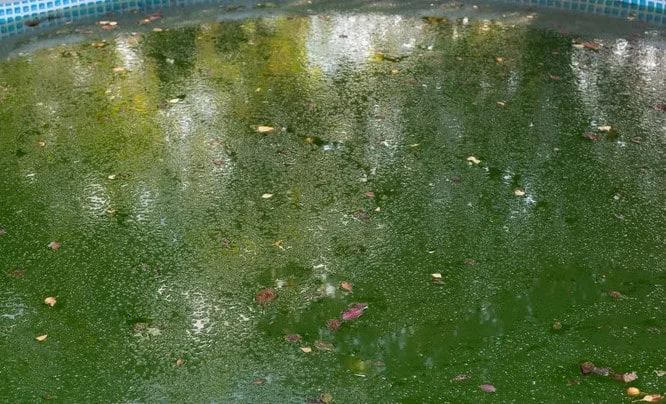Help! My Pool Water is Green – Your Ultimate Guide to Pool Algae
Wouldn’t it be fantastic if you could just set up your pool, fill it with water, and never have to worry about it again? Unfortunately, the sight of green pool water and swimming pool algae is a quick reminder that it’s not quite that simple.
As with any leisure activity, a swimming pool requires regular maintenance to preserve its integrity. By adhering to regular upkeep, it’ll prevent you from battling pool algae infestations and the bacteria that feed on it and keep your pool water from turning green.
If your preventative measures have failed and you need to clean algae from your pool, don’t worry. Although removing pool algae will require some effort, it’s resolvable and well worth your time.
In this guide, you’ll learn how to get rid of algae in your pool, what to do if your pool water is green, how to clean algae from your pool, and more!
1. Problems Caused by Algae
2. How Pool Algae Affects Your Health
3. Causes of Swimming Pool Algae
4. Types of Pool Algae
5. How to Eradicate Algae
6. How to Prevent Pool Algae Tips
Problems Caused by Algae
Pool algae are like having weeds in your garden; it’s unsightly, problematic, and quite frankly, no one wants to deal with it. As nature would have it, you can find algae everywhere there is water, and algae spores can survive on many surfaces until they reach a new place to call home.
Algae, which can live purely on sunlight, is a single-celled plant that uses photosynthesis to create food to feed itself. It’s because of this that pool algae can cause a few problems for pool owners. Most commonly, algae will turn your pool water green. Unfortunately, pool algae can take hold if the sanitation levels drop even the slightest.
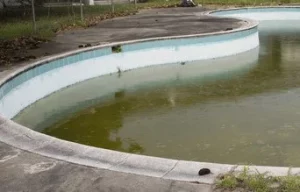 Once your pool water is green, cloudy, or discolored, your pool’s filtration system is the next concern. Swimming pool algae will quickly clog your filters and sanitation pathways, causing further contamination. If left untreated, you risk providing a breeding ground for bacteria.
Once your pool water is green, cloudy, or discolored, your pool’s filtration system is the next concern. Swimming pool algae will quickly clog your filters and sanitation pathways, causing further contamination. If left untreated, you risk providing a breeding ground for bacteria.
The bacteria feast on algae. This can result in a buildup of bacteria that leads to staining and deterioration of your pool equipment and structure. Black pool algae are a culprit of leaving hard to remove stains caused by its deep-seated roots. Replacing equipment can be costly, but it’s rather challenging to remove stains from your pool’s structure. So keeping algae at bay is the optimum solution.
If your pool is turning green from pool algae, it’s vital to get rid of algae in your pool as soon as possible to prevent algae on your pool walls and stop algae from spreading in your pool. To eliminate or reduce the risk of algae, use Pool Marvel Water Treatment in addition to the chemicals you are using to kill algae in your pool. Pool Marvel helps to maintain pH and alkalinity levels and enhances other chemical treatments.

How Pool Algae Affects Your Health
Can you swim with algae in the pool? In some instances, it may be an obvious sign not to enter if the pool water is green and contaminated, and thick with algae. But if there are few pool algae spots and no slime, you can swim in the pool.
It isn’t the swimming pool algae per se that presents health risks. Instead, it’s the bacteria that feed on algae that are unsafe. When pool algae infestations grow out of control and your pool is turning green, there are more harmful bacteria in these environments. Suppose you swim in infected green pool water. In that case, you risk ingesting the contaminated water and can suffer from diarrhea, fever, or other digestive issues.
Swimming in a pool that is turning green and appears contaminated with algae means you are likely swimming with substantial amounts of harmful bacteria. Skin exposed to the bacteria is prone to irritation, and swimmers are likely to contract a skin rash or a more severe skin infection.
Green pool water is a reliable indication that there could be slimy algae pasted on the pool’s steps and bottom. Swimming pool algae is a slippery surface for your bare feet. Slippery green algae plus green pool water equals a potentially dangerous fall. Slick surfaces in the pool – ladders, seats, metal handles – also pose a slipping risk if they’re covered in pool algae.
To avoid these hazards, avoid using the pool until you successfully eradicate the algae with chemicals and a natural algaecide for your pool. Once you clean algae from your pool and the water is clear, it’s safe to swim again.
What Causes Swimming Pool Algae?
Algae spores constantly enter your pool from various outside sources. Some natural elements that carry algae spores include rain, leaves, and anything carried by the wind. Algae spores can store themselves on bathing suits, especially the same suits used in other swimming areas. Spores can even reside on the pool equipment that frequently enters and exits the pool.
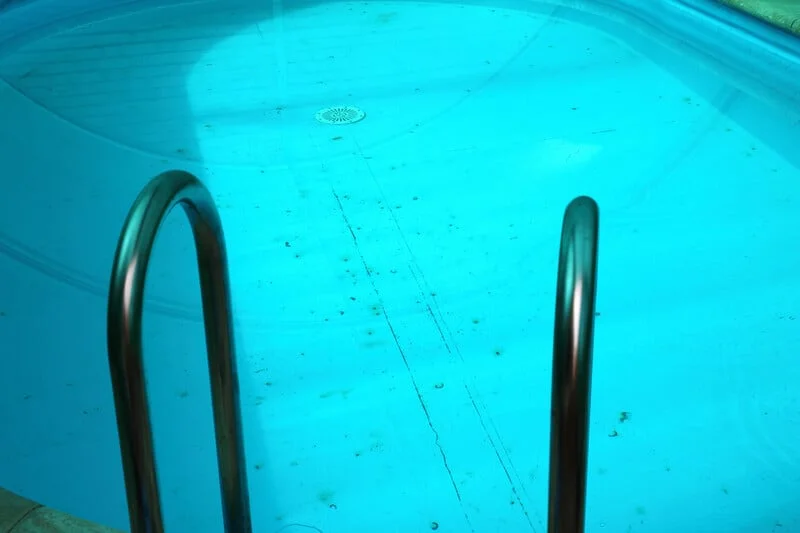
Algae spores easily survive with the abundant food provided for them in a swimming pool. Swimmers carry hordes of debris and solids. This provides food for swimming pool algae, giving it the nutrition it needs to grow and flourish. Algae is always present in your swimming pool, patiently waiting to bloom.
Poor water circulation and filtration promote the perfect environment for algae to thrive. When your pool cannot properly filter out waste and dissolvable solids, algae will take over and turn your pool water green. Not running your pump to filter the water long enough leads to the water standing still for too long, giving swimming pool algae a chance to develop. A sanitized and clean filter is required to completely filter the debris and swimming pool algae out of the water.
If you suspect swimming pool algae is making your pool water green or cloudy, check the water’s alkalinity and pH balance. This is the most common cause of green pool water. Unfortunately, algae can become resistant to chlorine and sanitation because of the water’s pH and alkalinity. Pool water’s pH balance is essential for swimming pool algaecide and other chemical treatments to work efficiently. To get rid of algae in your pool, use a natural algaecide supplemented with Pool Marvel.

Types of Pool Algae
Out of thousands of known algae varieties, four algae commonly plague swimming pools and are classified by color. Determining what type of pool algae is contaminating your pool will effectively decide how to get rid of algae in your pool.
Green algae are the most common algae in above ground pools. It’s quick to make its presence as soon as there’s a chemical imbalance or cloudiness to the water. Green pool algae are typically free-floating in the water, but you can find algae on the pool walls or bottom.
Is your swimming pool water green? If green pool algae are left untreated, it will quickly plaster itself in sheets, completely covering the walls in green slime and turn your pool water green. No one wants green pool water or algae on pool walls. Luckily, green pool algae are the easiest to get rid of, and using a natural algaecide will clean algae from your pool. We’ll address how to get rid of algae in above ground pools and inground pools shortly.
Black algae can be tough to remove altogether. You’ll notice black pool algae as dark black or blue-green spots in the cracks, tile grout, or pool plaster crevices where it can easily sink its roots in deep. Unless you can eradicate all the roots, black pool algae will regrow in the same spot.
Black pool algae, or cyanobacteria, contain toxins that are harmful to your health. When it blooms, it releases cyanotoxins. Cyanotoxins are a potent natural poison that can compromise your health when inhaled or ingested in a swimming pool with black algae. Symptoms range from nausea to intense stomach pain and could potentially damage your liver.
If you think your swimming pool has black pool algae, begin treatment as soon as possible. Black pool algae are slow-growing but can become tolerant of natural algaecide for your pool and rapidly spread in poor water conditions. Black algae in above ground pools are an unwelcome, hazardous guest. We’ll cover how to get rid of black algae in your swimming pool in the next section.
Yellow algae, also known as mustard algae, are rare and can be mistaken for a stain, dirt, or sand in your pool. As a persistent grower, yellow pool algae can survive outside of your pool on swimsuits, toys, floaties, and pool equipment. Because of this, it’s challenging to get algae out of your pool. These items will need a good rinsing and sanitizing using pool algaecide for treating yellow pool algae.
Can you swim in a pool with mustard algae? While it’s uncommon for yellow algae to completely take over your pool, it isn’t something you want to swim in. Infestations of swimming pool algae harbor dangerous bacteria that can enter your body and cause serious bacterial infections.
You will find yellow algae on pool walls in the shady section of your pool. Finding yellow algae in your swimming pool can be discouraging. But it doesn’t mean you have completely neglected your pool. Yellow pool algae are resistant to normal or even high chlorine levels. So you’ll need a swimming pool algaecide and cleaning solution to eradicate the yellow pool algae for good.
Pink algae occasionally referred to as pink slime, is not algae but bacteria. The slime that forms around the pigmentation is a defense mechanism to protect itself from external threats. Pink pool algae commonly reside in shady pools and flourish in poorly circulated water.
As it loves to grow on PVC, pink pool algae can streak the pool’s structure and typically grow together with white water mold. Pink pool algae is potentially dangerous to your health if the bacteria enters your body, usually through your eyes, mouth, nose, or an open wound.
Despite regular maintenance and shocks, pink pool algae is resistant to normal chemical levels. The bacteria feed on fatty and mineral deposits found in lotions and soap. So how to get rid of pink algae in your pool is with a powerful cleaning and sanitizing solution. Prevention, however, is the best method to keep swimming pool algae at bay.
How to Eradicate Algae
The best way to kill algae in your pool involves several steps. The process is generally the same for all types of pool algae. We’ll cover the process of how to get rid of algae in your swimming pool, then answer some frequently asked questions.
The Process:
Manually vacuum your pool – Automatic pool cleaners don’t detect where algae have built up. Also, they usually can’t access hard to reach areas where green pool algae like to hide. Manually vacuuming your pool allows you to clean algae from your pool and pay special attention to areas built up with pool algae.
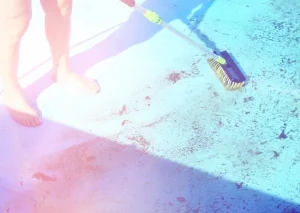 Brushing the floor and walls of your pool – Scrubbing the algae off the structure of your pool allows your sanitizers and chemical shock to kill algae in your pool effectively. In scrubbing off the pool algae, it can then get picked up and filtered out. Using a stiff-bristled brush will allow you to scrub off tough stains like ones formed from black pool algae.
Brushing the floor and walls of your pool – Scrubbing the algae off the structure of your pool allows your sanitizers and chemical shock to kill algae in your pool effectively. In scrubbing off the pool algae, it can then get picked up and filtered out. Using a stiff-bristled brush will allow you to scrub off tough stains like ones formed from black pool algae.
Test and balance your water – Testing your pool’s pH balance and alkalinity will indicate what the water needs to regain balance. A proper pH balance allows your sanitizer to work effectively against the algae. In contrast, a high pH or low alkalinity inhibits the effect of any shock treatment.
Shock your pool and filter out the algae – Very developed cases of resistant pool algae require aggressive treatments and more shock. Shock your pool in the evening for maximum efficiency. Also, add contaminated equipment or toys to the water to be sanitized. Once the shock treatment has killed the algae in your pool, add pool algaecide. Then run a sanitized filter for at least eight hours a day until the water is clear. This will stop algae from spreading in your pool.
Retest the water – Once you’ve completed a chemical treatment to get algae out of your pool, test the water again. Testing for pH balance and alkalinity ensures the chemicals maintain their effectiveness, which is the best way to get rid of green algae in your pool.
This process will get algae out of an above ground pool or inground one and is the best way to kill algae in your pool.
FAQ’s
How to get algae off the bottom of your pool?
Vacuuming and scrubbing work best to get algae off the bottom of your pool and remove debris. Follow up by testing the water, treating with chemicals, using a pool algaecide, and pumping the water through a clean filter.
Does chlorine kill algae?
Yes, chlorine is the most effective chemical to kill algae in your pool, as well as the bacteria that feed on it.
How to remove algae from a pool without a vacuum?
You can scrub the pool with a stiff-bristled brush and then treat it with chemicals and a pool algaecide to kill the algae.
How to get rid of slime in your pool?
Start with cleaning your filter. If there is slime, chances are the filter is clogged up with it. Once you’ve cleaned your filter, begin the process of eradicating pool algae, and use a natural algaecide for your pool.
Can you swim with an algaecide in the pool?
It’s best to wait the recommended time before entering your pool for the pool algaecide to disperse evenly throughout the water. Entering the water too soon after treating with swimming pool algaecide can irritate the eyes and skin.
How much shock to kill algae?
30ppm of chlorine will kill all algae, assuming your pool has been cleaned and tested.
How to get rid of a green pool?
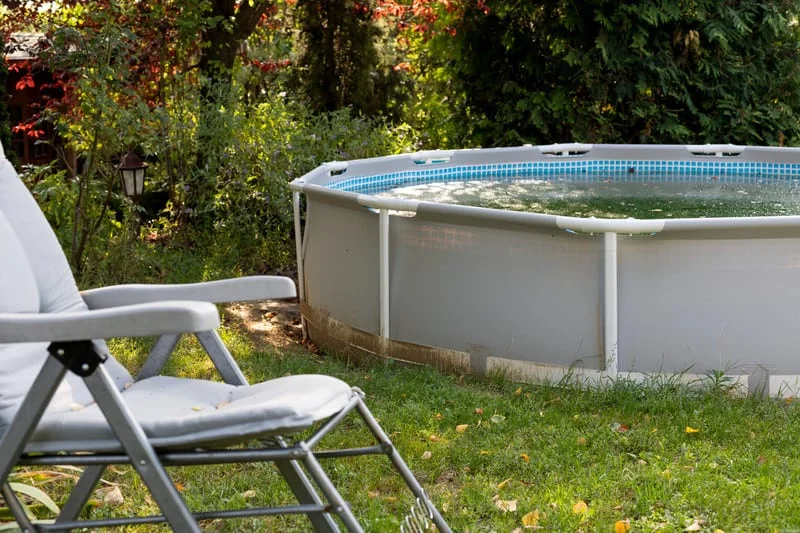
Start with a chemical test. The results will indicate what minerals and chemicals are imbalanced in the water and provide you a direction for proper chemical treatment. Then follow the process to eradicate algae.
How to clean algae out of an above ground pool?
The process to eradicate algae work for any pool, above ground or inground.
How to Prevent Pool Algae Tips
How can you prevent pool algae? Maintaining a clear and clean pool requires effort upfront to avoid pool algae infestations. Balanced pH is essential, so your sanitizers and pool algaecides achieve maximum effectiveness. Proper pH eliminates an environment that pool algae can thrive in by killing algae spores and bacteria.
The same goes for your filtration system. An adequately sanitized filter will effectively remove algae spores and bacteria in the water. Your pool filter needs to run at least eight hours per day to ensure most bacteria are cleaned out.
A sanitized filter paired with constant water circulation prevents pool algae and bacteria from settling in or standing still. Proper water circulation works to thoroughly mix sanitation chemicals and pool algaecides so it can clean algae from your pool.
Rinse and sanitize anything that enters your pool to effectively eradicate algae spores that have stowed away on swimsuits, toys, and pool equipment. Have swimmers rinse off before entering the pool to reduce the quantity of debris and bacteria from being transferred into the water. This will eliminate a nutritious food source for algae to feed on.
Set up a weekly cleaning and shock treatment schedule to maintain a beautiful, algae-free pool.
Enjoy Your Pool
Several factors can impact algae infecting your pool. Even the most well-kept pools are susceptible to pool algae. Depending on where you live, the elevation, humidity, weather, and sunlight play a part in algae entering your pool.
It’s crucial to act as soon as you notice signs of algae in your pool. The quicker you take steps to eradicate it, the easier the pool algae will be to remove. If some algae spores are still present after cleaning and shocking your pool, algae will reappear in the same place. So act swiftly and aggressively to get rid of algae in your pool, and follow a regular maintenance schedule. This will reduce the chance your pool becomes infected with swimming pool algae. Also, bookmark and refer back to this ultimate guide on algae in swimming pools and how to remove it, so the solution is at your fingertips.



